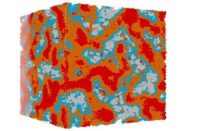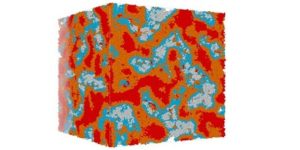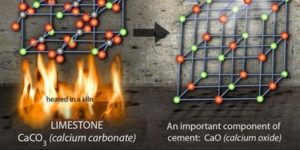
The Daily Telegraph reports that esearchers at the University of Bath, Cardiff University and the University of Cambridge in the United Kingdom are studying the use of bacteria to fill cracks in concrete. The concrete mix contains bacteria that are enclosed in a sphere. When no water is present, the bacteria are inactive.
When a crack in the concrete develops, however, tiny bits of water seepsinto the concrete. The presence of water causes the bacteria to burst out their cases and produce limestone, which seals the tiny crack before it can widen and become a pothole. The researchers believe the technique can reduce costs by 50 percent, increase the lifespan of concrete and contribute to reduced carbon emissions because less road repair work would need to be done over time.















